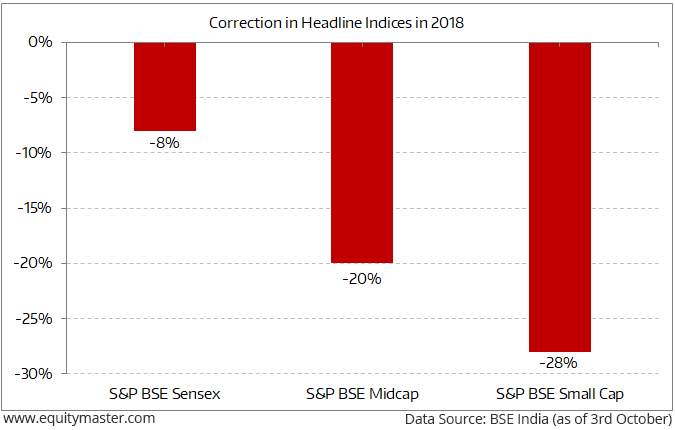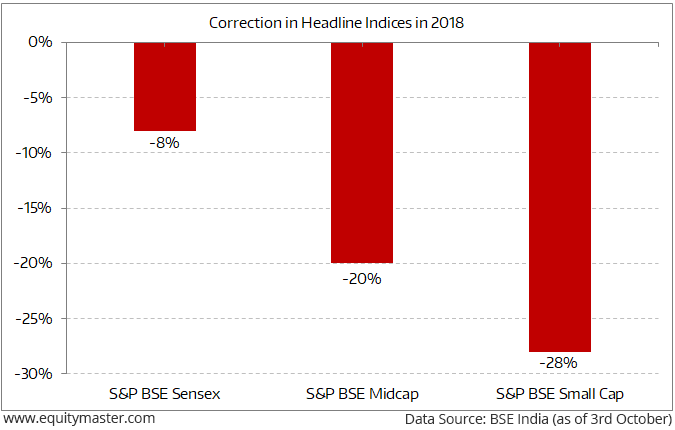Share markets in India continued their sell-off seen during the day and ended the trading session deep in the red. All sectoral indices traded on a negative note with stocks in the IT sector and energy sector witnessing most of the selling pressure.
At the closing bell, the BSE Sensex stood lower by 464 points (down 1.3%) and the NSE Nifty closed down by 149 points (down 1.4%). The BSE Mid Cap index ended the day down 1.1%, while the BSE Small Cap index ended the day down 1.3%.
The rupee was trading at 73.43 against the US$.
Asian stock markets finished on a mixed note. As of the most recent closing prices, the Hang Seng was up by 0.4% and the Shanghai Composite was up by 2.5%. The Nikkei 225 was down 0.6%.
Speaking of sell-off in the stock markets, many good companies have corrected quite a bit.
The chart below shows the current mood of the market. Headline indices have corrected significantly from their peaks in 2018.
Are These Deep Corrections a Buying Signal?

These corrections are a clear sign of fear across sectors and individual stocks.
As per Research Analyst, Ankit Shah, the correction could last longer.
Despite all the volatility and periodic crashes, equities are still one of the most rewarding and safe asset classes over the long run.But looking at the history of equity returns, he believes this would be just a passing correction phase.
In the news from global financial markets, China’s economy grew at a slower than expected pace of 6.5% in the third quarter from a year earlier.
This was marked as the weakest rate since the global financial crisis. The data pointed a modest cooling in the world’s second-largest economy, as the government’s multi-year efforts to tackle debt risks begin to weigh on growth and as a trade war with the United States threatens its exports.
As per the data, retail sales rose 9.1% over a year earlier in the first nine months of the year, down 0.1% from the first half. Growth in factory output decelerated to 6.4% for the first nine months of 2018, down 0.3 percentage points from the first half. Investment rose 5.4% in the first three quarters, down 0.6 percentage points from the first half.









Leave A Comment